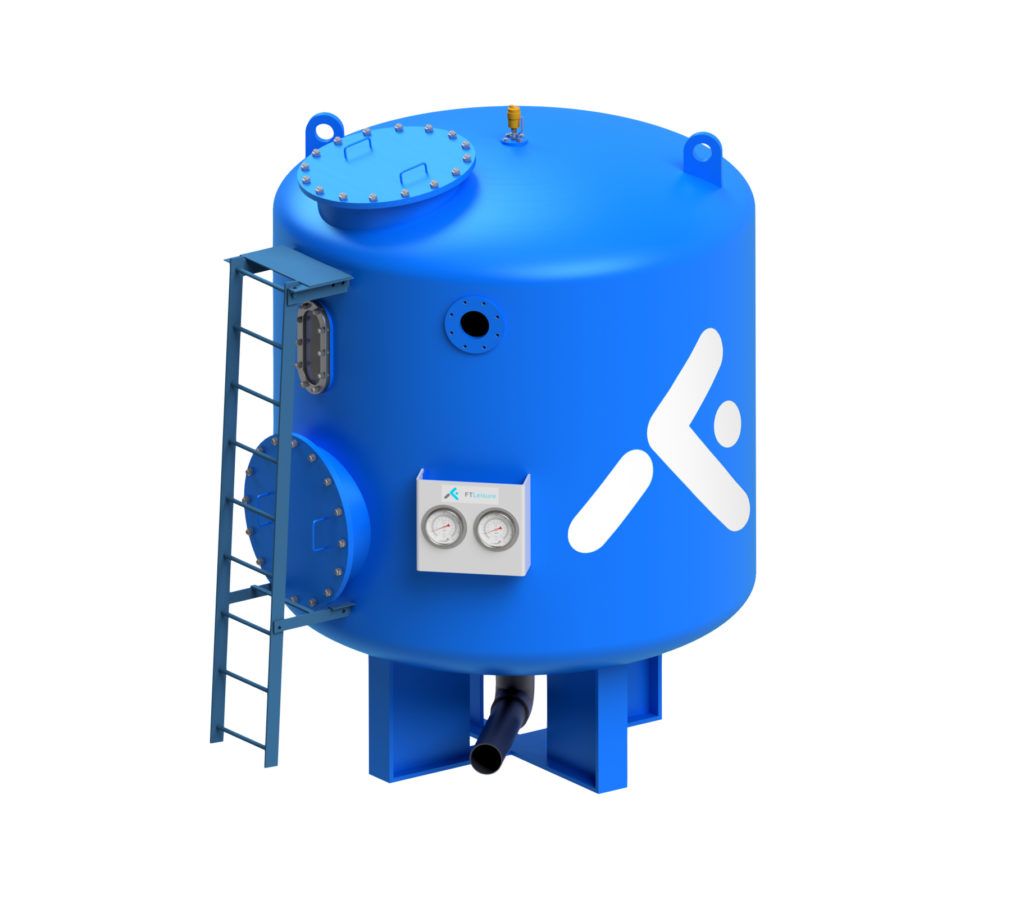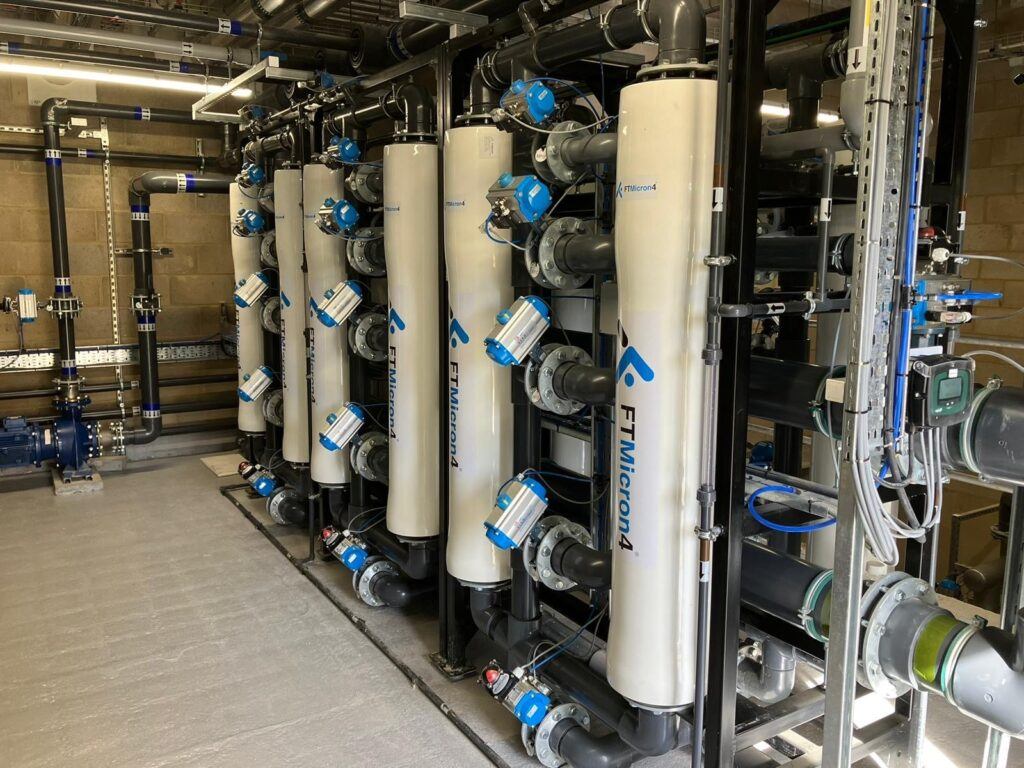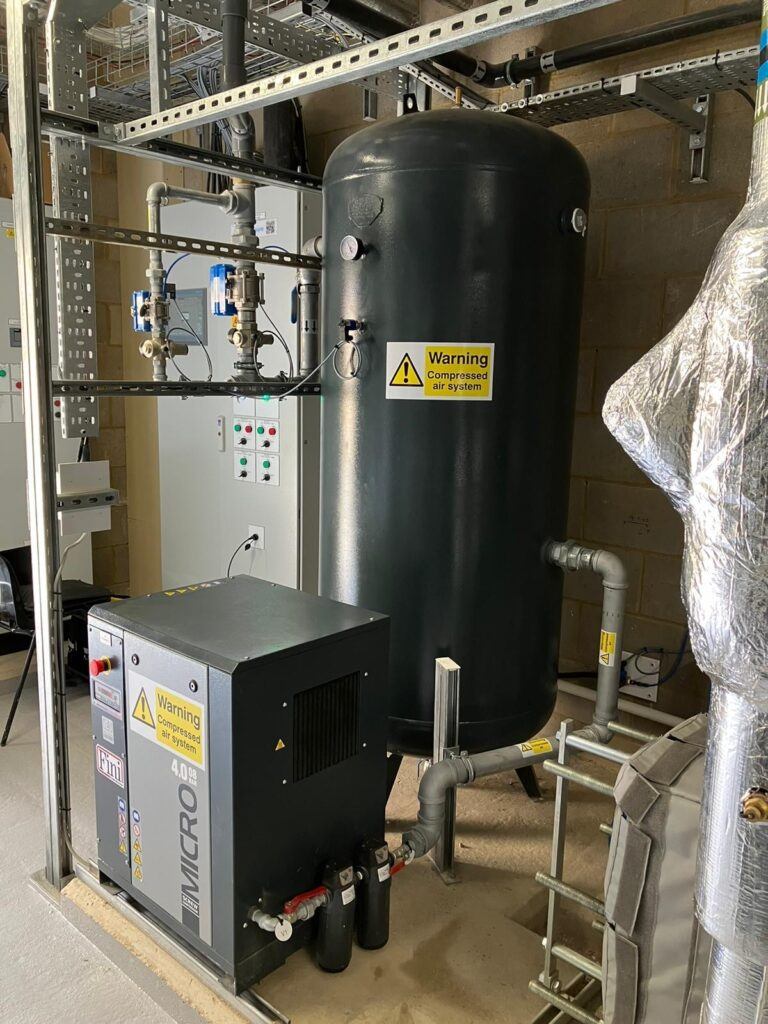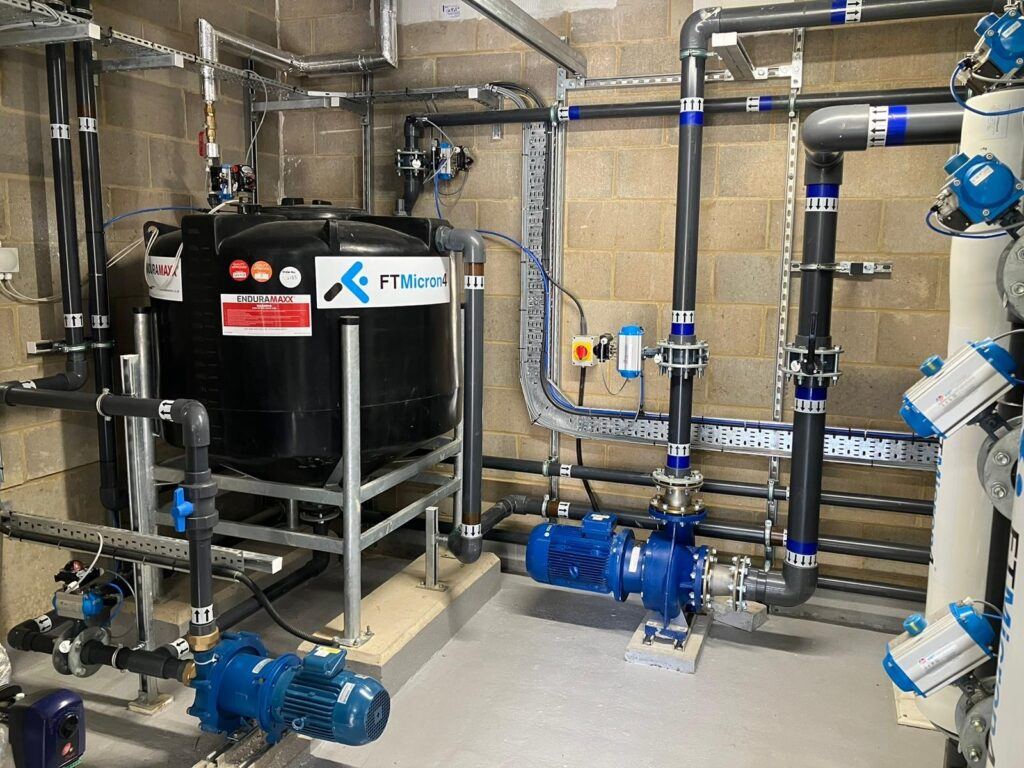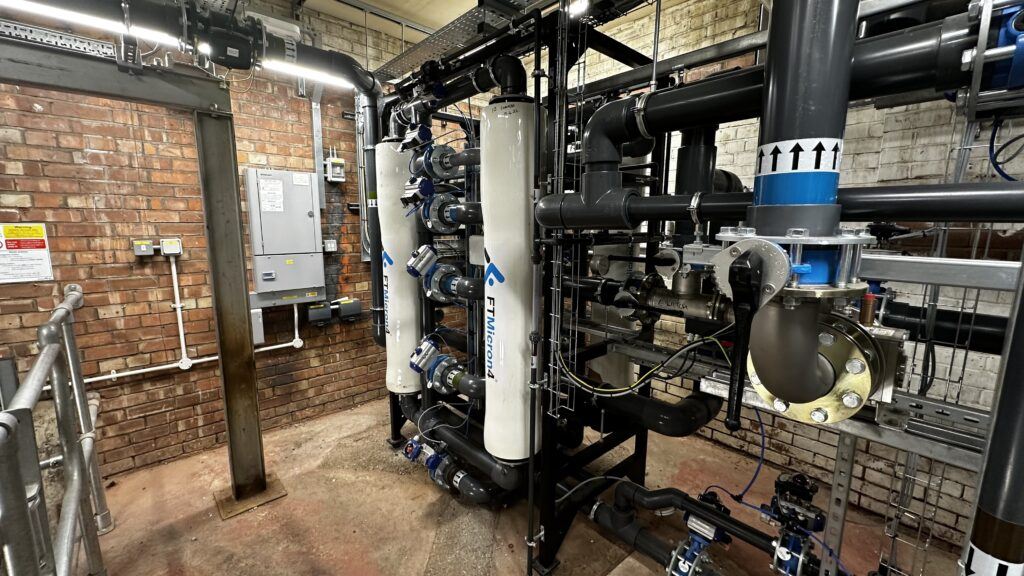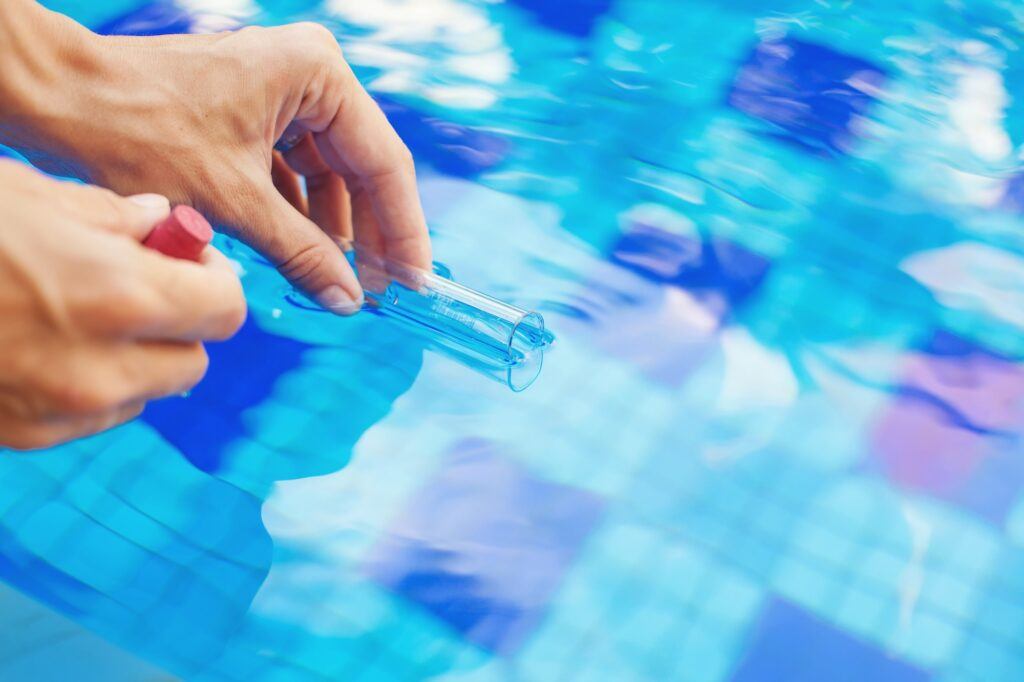How it works - Cleaning
Over a period of time, the pressures in the system will build up due to greases, oils and biofilm, that the above washing process cannot remove.
An automatic CIP system therefore intermittently cleans the membranes, typically twice a month, depending on bathing loads and pollution levels. The whole system is shut down (out of hours) and 55˚C hot water is pumped around the membranes and Alkali detergent is dosed to achieve a high ph level (12). If scaling is an issue, a similar process can be carried out using an Acid chemical.
Once the CIP is complete, the system is refilled and filtering recommences, with no involvement required from the operator. The CIP process will return the membranes to their clean state.

